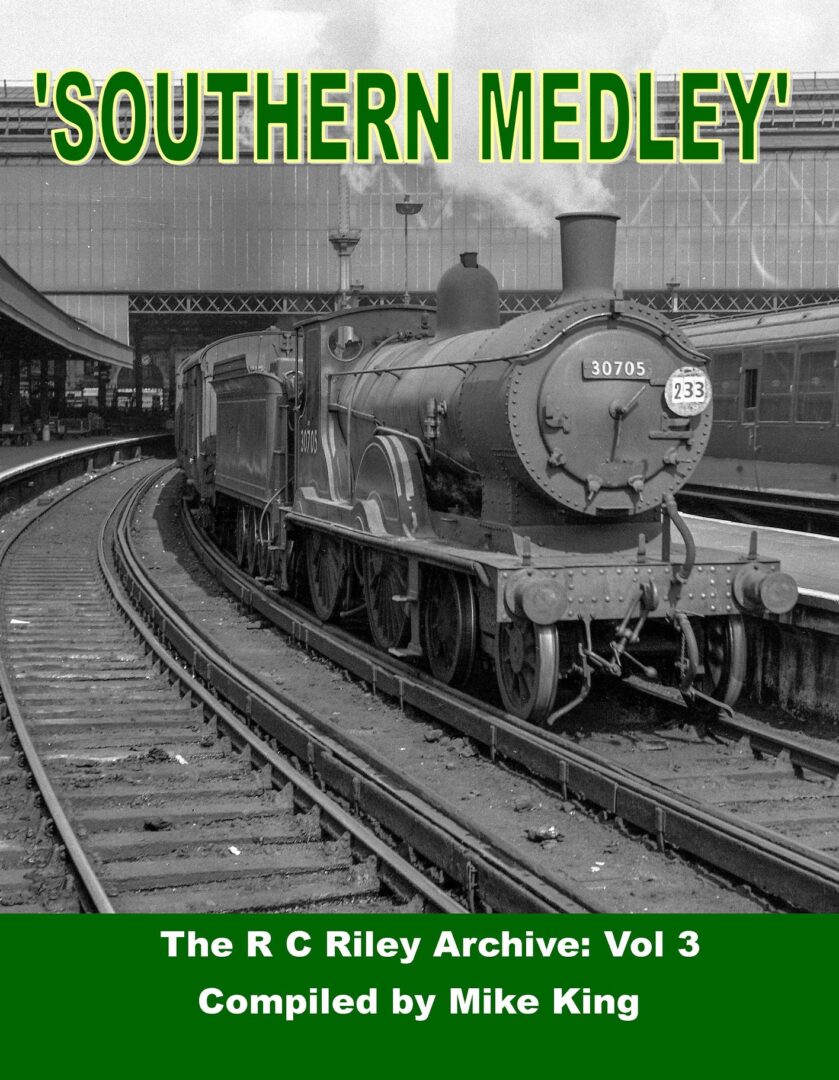

The Southern’s Withered Arm – AVAILABLE AS A DIGITAL COPY ONLY
£12.00
Alan C Butcher
- Description
- Additional information
- Reviews (0)
Description
In the early 1830s a surveyor from Plymouth, Roger Hopkins, was appointed to survey the route for a railway between Bodmin and Wadebridge. As a result, on 23rd May 1832, Parliament passed the act that authorised construction of a seven-mile line between the towns concerned. In addition, a 6.5-mile line linking Wenford Bridge Junction and Wenford Bridge was included, along with a mile long line to Ruthern Bridge.
The line was opened on 4th July 1834, becoming the first locomotive-operated railway in Cornwall. As an indication of traffic potential, the main line was from Wadebridge to Wenford Bridge – Bodmin and Ruthern Bridge being mere branches.
In 1846 the Bodmin & Wadebridge Railway (B&W) was acquired by the London & South Western Railway (LSWR); isolated by 200 miles from the latters nearest railhead at Basingstoke. It was not until Great Western Railway (GWR) reached Boscarne Junction in 1888 that the B&W was connected to the rest of the railway network. The LSWR finally arrived, via the North Cornwall Railway Act of 18th August 1882, at Wadebridge in 1895.
The final pieces of the Southern’s network in the west were completed, when in 1899 Padstow was connected to Wadebridge, and in 1925 with the completion of the North Devon & Cornwall Junction Light Railway linking Halwill to Torrington.
Upon the Grouping of the many independent railways in 1923, to form the ‘Big Four’, the Southern Railway (SR) decided it needed advertise the holiday potential of its lines in Devon and Cornwall. On 19th July 1926 the ‘Atlantic Coast Express’ made its first run from Waterloo. Initially it served five West Country destinations – Bude and Padstow in Cornwall, Ilfracombe, Plymouth and Torrington in Decon.
In later years portions for Exmouth and Sidmouth were served from Sidmouth Junction. On summer Saturdays, particularly in the 1950s and early 1960s the train ran in several portions. By 1963 it divided at Exeter Central for Ilfracombe/Torrington, and Padstow/Bude – the latter having connections at Okehampton with a Plymouth service. The summer timetable saw two separate trains running from Waterloo: the 11.00 to Ilfracombe and Torrington, the 11.05 to Padstow and Bude.
Post-World War 2, in 1947, the Southern introduced the ‘Devon Belle’. Serving Ilfracombe and Plymouth in Pullman splendour, complete with Observation Car. It was not as successful as the Southern’s other Pullman services and ceased running in 1954.
In the late 1950s, the Southern proposed to modernise its lines in South Devon with units similar to the diesel-electric multiple units used elsewhere on the region’s nonelectrified routes. A depot would have been built in the ‘V’ of the junction of the Exmouth branch to the east of Exeter. Nothing came of the scheme, possibly due to regional boundaries, or rivalries, that it would seem to preclude operation over the Western lines.
There had been a change of ‘owner’ when Southern lines west of Blandford Forum, Dilton Marsh (near Westbury), Dorchester and Wilton, were transferred to the Western Region on 1st January 1963. It was reported that, initially, the Southern was more than happy to see the back of its ‘Withered Arm’, which was now making losses; later changing its mind when the scale of the devastation of lines in the West Country was promoted in Dr Richard Beeching’s report. It was obvious that the transfer of the Southern Region’s Western Division to the Western Region was seen as a means of speeding up the massive closures for which Beeching had been appointed.
Through trains from Waterloo to the West Country ceased on 5th September 1964. Exmouth Junction depot which supplied steam motive power for the Salisbury and West Country lines closed, with services either diesel-hauled or operated by diesel multiple-units.
Generally, the phrase ‘withered arm’ covered the lines to the west of Exeter, in this volume the Southern’s branch lines to the east of the city will also be visited.
In view of the complicated railway history in some areas; for instance, at Exeter St Davids ‘Up’ trains for London left the station in both directions; and the Southern’s Exeter-Crediton line being laid to Brunel’s broad gauge, then mixed and finally standard as the company changed ownership. The decision has been made to keep everything ex-LSWR and Southern Railway within the Southern Region heading, likewise the GWR and Western Region.
‘Withered Arm’ is a look at the Southern branch lines, west of Salisbury and west of Exeter.
Only a few who would not lament the passing of the numerous branch, main and cross country lines from the area. The closures were especially hurtful for those in Devon and Cornwall, where once truly expansive Southern network now only comprises of three short branche stubs.
Author Alan Butcher comes with an intimate knowledge of several of the lines featured.
With the closure of the routes, many types of steam engines disappeared as well. The book showcases examples of the Adams Radial, E1R classes and Bulleid Pacifics.
Featuring material from several archives, including that of R C Riley, Peter Gray and Roy Vincent, this is a collection to truly savour.
Additional information
| Weight | 530 g |
|---|---|
| Dimensions | 27 × 215 cm |
| pages | 112 |
| illustrations | 177 |
| cover | paperback |
| ISBN | 9781913251055 |
| dimensions | 273 x 215 mm |
| format | portrait |
Only logged in customers who have purchased this product may leave a review.




Reviews
There are no reviews yet.